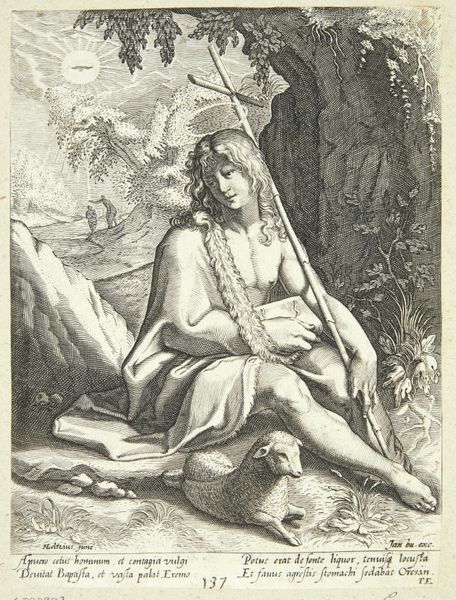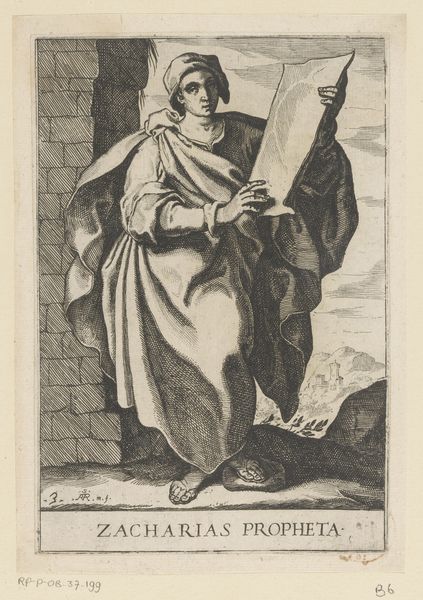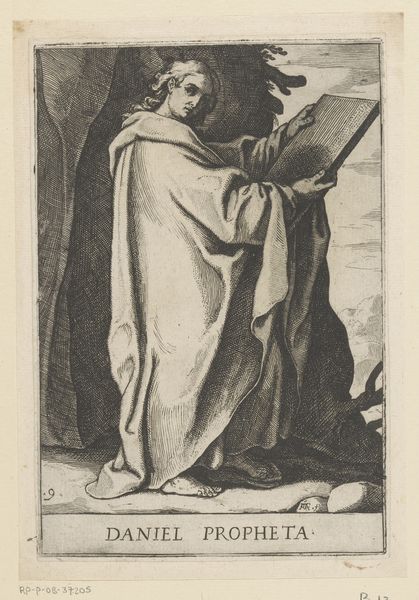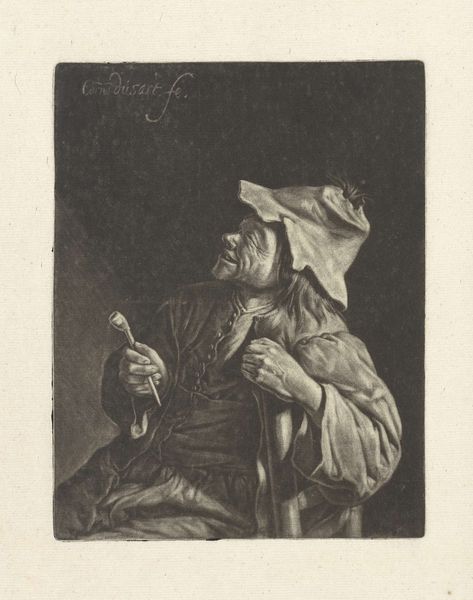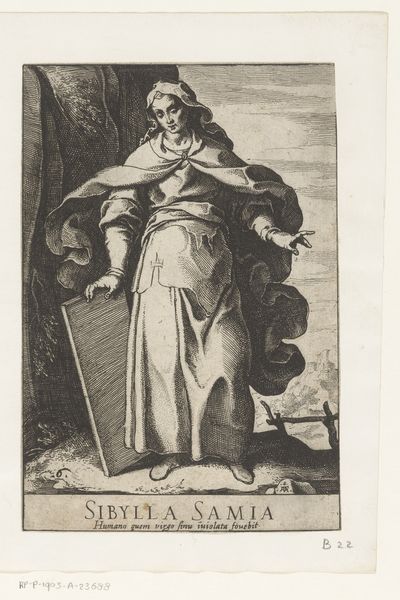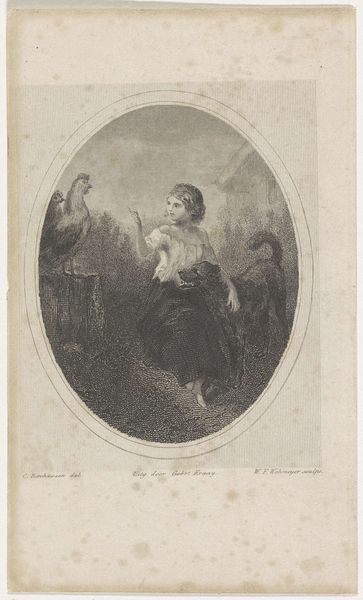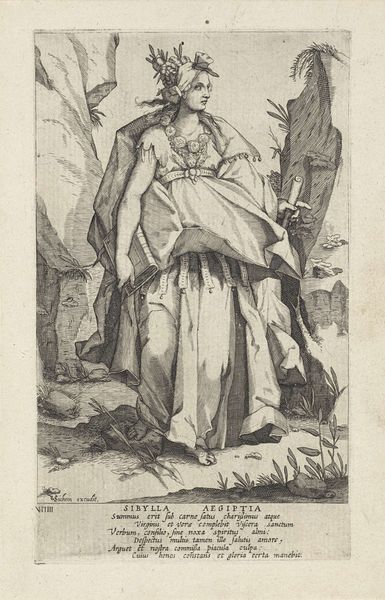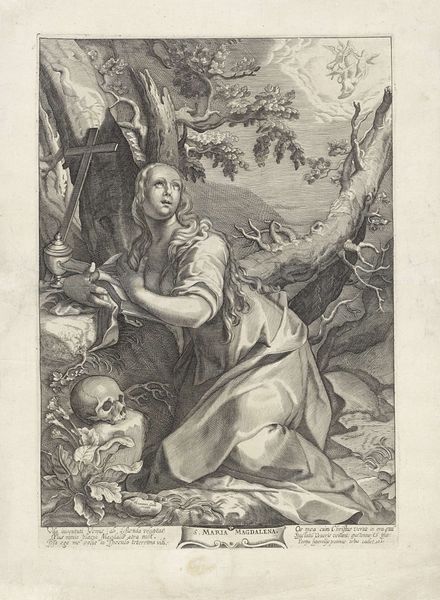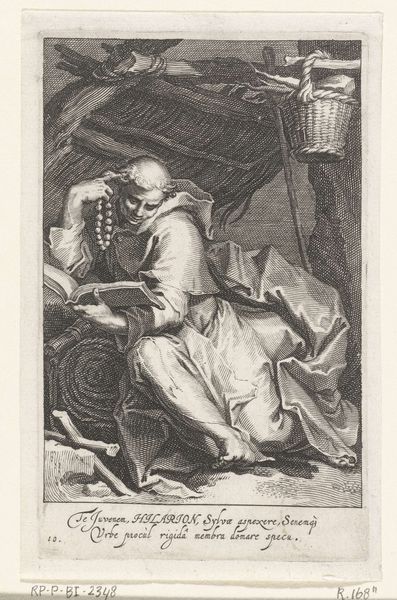
engraving
#
portrait
#
allegory
#
baroque
#
old engraving style
#
line
#
history-painting
#
engraving
Dimensions: height 267 mm, width 212 mm
Copyright: Rijks Museum: Open Domain
Curator: Here we have Michel Dorigny's 1651 engraving, "Maria Magdalena biddend bij een kruis," which translates to Mary Magdalene Praying at a Cross. Editor: It strikes me immediately as quite somber. The stark contrast of light and shadow really amplifies the subject's expression of intense devotion. Curator: Absolutely. Considering the religious and political climate of the time, the Baroque period, such depictions of religious figures served as powerful tools. This portrayal of Mary Magdalene, in particular, invited introspection and piety amongst viewers. Editor: Do you think the symbols accompanying her—the skull, the book, the cross itself— reinforce this message for a largely literate audience? It feels a bit on the nose, to me, in how it signifies repentance. Curator: Symbols had varied meanings based on social and educational positions in the society of the time. For many, such symbols served as crucial reminders and didactic tools during church teachings. Remember, this isn’t simply an artistic representation but also functions as a reflection of societal power structures and expectations regarding religious expression. Editor: You’re right. It prompts us to think about how institutions shaped these images. Did Dorigny's Mary Magdalene reflect, perhaps also, a need for strong female religious figures during the 17th century, a kind of emotional anchor? I am especially thinking about how many women in marginalized communities did not enjoy even close to similar access to religious fulfillment. Curator: Certainly. And when we look at the style of line engraving and the specific decisions of rendering—it reflects the popular style that would circulate imagery across communities of diverse backgrounds and identities, each with their own understanding of its iconography. Editor: It's compelling how much this engraving reveals about the dialogue between religious practice, visual representation, and societal expectations. Curator: Precisely. It makes you wonder what Mary Magdalene, herself, might have thought of it all.
Comments
No comments
Be the first to comment and join the conversation on the ultimate creative platform.
